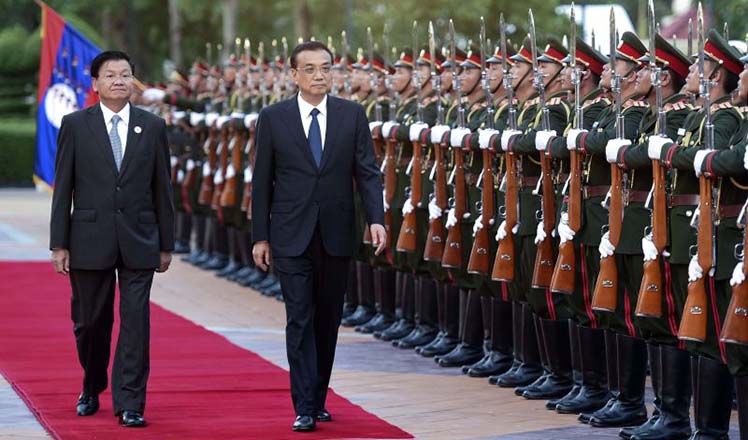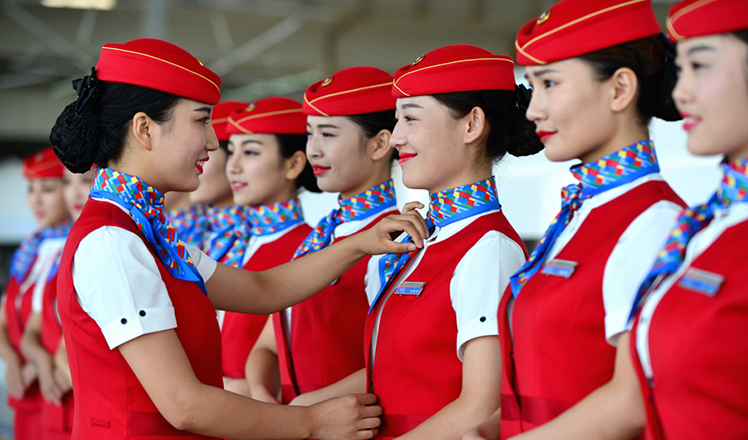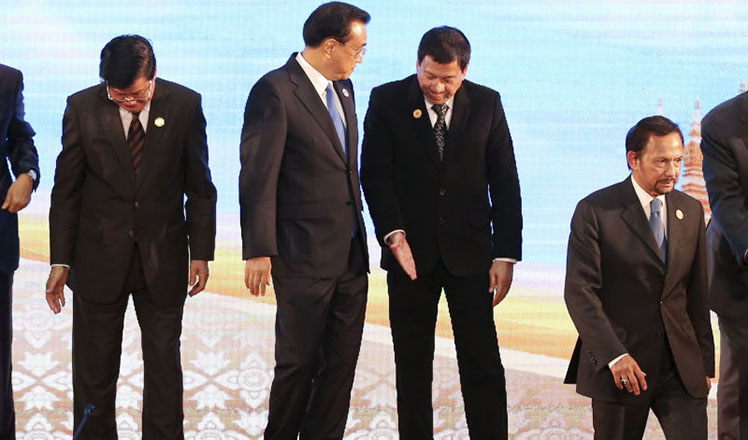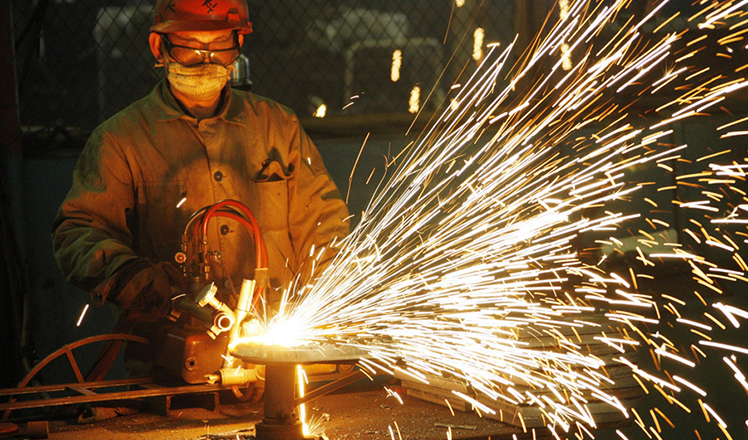Creating, bridging communities
Updated: 2016-09-09 11:26
By Sophie He(China Daily USA)
|
|||||||||
HK's subway operator has a bigger role to play in building and linking communities than just transporting millions of commuters, MTRC chief Lincoln Leong tells Sophie He.
MTR Corporation (MTRC) - Hong Kong's subway operator - is not just about conveying millions of people a day. Its significance is in building and linking communities, says Chief Executive Officer Lincoln Leong Kwok-kuen.
Connecting communities is the service the company provides, and with it comes a high quality of service.
Since its establishment 41 years ago as a government-owned statutory body to meet public transportation needs in one of the world's most congested cities, MTRC now moves more than 5 million passengers each day in Hong Kong, taking up nearly half of the city's public transport market share. It has also spread its wings around the world, having won deals to operate rapid transit systems in major centers, including Beijing, Shenzhen and Hangzhou on the Chinese mainland, London and Sydney.
The company's service delivery, which is defined by its on-time performance, is 99.9 percent, says Leong. What it means is that a commuter, who travels to and from work every day, would only encounter a five-minute delay over a period of two-and-a-half years' commuting and that, in many ways, is a leading world standard, he explains.
Besides bridging communities, MTRC builds them. It comes back to the company's business model, which is the "rail and property" model that covers rail development and all residential projects atop and adjacent to MTR stations and depots, says Leong.
"Over the past 30 or 40 years, we have completed more than 40 very large scale projects in Hong Kong. So, it's bringing communities together through a high quality rail-transport network, as well as building communities which would be leveraging our rail and property model, and I think these are our key contributions to the people of Hong Kong."
Going forward, Leong says, MTRC's three-pronged strategy is to support its vision of connecting and growing communities. First and most important is enhancing its business locally. Secondly, building up its brand reputation in and outside of Hong Kong; and thirdly, growing its business beyond the city.
In terms of the company's continued growth in Hong Kong, "Rail Gen 2.0" is a big part of that, he says, explaining that it's the next generation of MTRC's network development.
Toward this end, the company is building four new rail lines - the Express Rail Link, the Kwun Tong Line Extension, the South Island Line East and the Sha Tin to Central Link. It's also striving to improve its existing network in Hong Kong.
"We're buying new trains, there's a lot of talk about the 93 new trains. Meanwhile, we are re-signaling eight lines in total. If you include the work we are doing for the Sha Tin to Central Link, that would add more capacity by re-signaling, we can run trains more frequently, which would add about 10 percent capacity on each of the lines being re-signaled."
Growing property base
Currently, the rail network covers about 220 kilometers, including the light rail network, with more than 50 kilometers to be added by "Rail Gen 2.0".
Growing in Hong Kong also means growing MTRC's property business. The company has 13 shopping centers with roughly 2.5 to 3 million square feet of rentable space. According to Leong, the shopping centers would grow by 40 percent over the next five to six years.
There will be two new shopping centers - one in Tai Wai and the other at LOHAS Park. There will also be an extension of the shopping center on Tsing Yi, plus extending that at Telford. On top of that, MTRC has teamed up with developers as part of its rail and property business model to build new residential apartments.
"Over the next five to six years, we'll be building some 16,000 flats that will be delivered to the market. There are sites that had been tendered out in the past 18 to 24 months, and we'll be working with various developers to build those, thus giving a big boost to Hong Kong's residential housing supply as well."
On the corporate side, striking a balance between different stakeholders has always been a task for MTRC, Leong admits.
"One of my predecessors said the company has two 'birth certificates'. One says we are to provide a high quality transport system in Hong Kong, while the other, which came after the company was listed as a commercial enterprise, is to achieve reasonable returns for shareholders."
But Leong believes that, overall, the company has managed to balance the interests of various stakeholders reasonably well.
Firstly, there's a benchmark rule for all the major metros around the world. One of the key factors is affordability in terms of the cost of a journey for a passenger as a percentage of commuters' medium household income.
Most affordable system
In this respect, MTRC runs one of the most affordable metro systems in the world. Another factor is its fare structure verses local inflation, as well as the increase in the medium household income.
"From 2008 to 2015, our fares had risen by an average of only 2.9 percent annually. Hong Kong's inflation rate was 3.5 per annum, and the average household income had gone up by 4.6 percent per annum."
Leong says that, from that perspective, after 2008, when the fare adjustment mechanism was in place, it has achieved its purpose, with fares having been raised below the inflation rate and household income. This encourages and pushes MTR to be more efficient.
The fare adjustment mechanism was introduced after the "rail merger" in 2007, replacing the fare autonomy MTRC had hitherto enjoyed. In short, the company can adjust its fares according to a formula based on publicly available statistics.
MTRC has agreed to an early review of the mechanism, so a review will take place a year earlier than schedule.
Contact the writer at sophiehe@chinadailyhk.com
- Three women planning 'imminent' attacks arrested in France: minister
- China, Britain vow to deepen military exchanges, mutual trust
- British parliament to debate second Brexit referendum petition
- Chinese women find their way through the glass ceiling
- Rousseff leaves presidential residence in salutation
- Thousands of Chinese rally in Paris to call for 'security for all'

 Sights and sounds of Premier Li's visit to Laos
Sights and sounds of Premier Li's visit to Laos
 Yao Ming and Class of 2016 receive Hall of Fame jackets
Yao Ming and Class of 2016 receive Hall of Fame jackets
 Bullet train attendants strut new look in Xi'an
Bullet train attendants strut new look in Xi'an
 Ten photos from around China: Sept 2 - 8
Ten photos from around China: Sept 2 - 8
 Turning mud into work of art
Turning mud into work of art
 Unforgettable moments of Premier Li at ASEAN meeting
Unforgettable moments of Premier Li at ASEAN meeting
 Six policy signals China sent at G20 Summit
Six policy signals China sent at G20 Summit
 'First Lady table ware' a hit in Hangzhou
'First Lady table ware' a hit in Hangzhou
Most Viewed
Editor's Picks

|

|

|

|

|

|
Today's Top News
Trump outlines anti-terror plan, proposing extreme vetting for immigrants
Phelps puts spotlight on cupping
US launches airstrikes against IS targets in Libya's Sirte
Ministry slams US-Korean THAAD deployment
Two police officers shot at protest in Dallas
Abe's blame game reveals his policies failing to get results
Ending wildlife trafficking must be policy priority in Asia
Effects of supply-side reform take time to be seen
US Weekly

|

|









